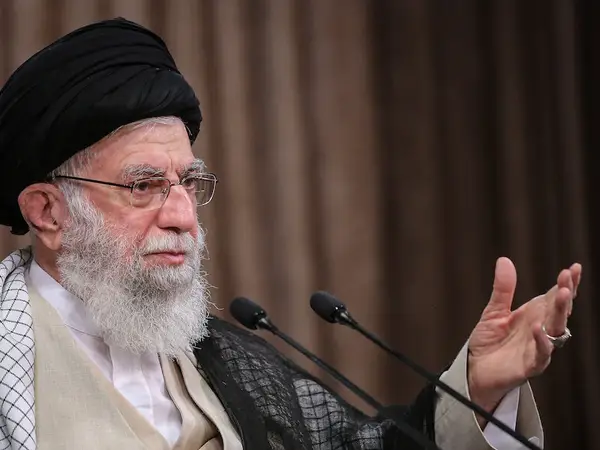This article is the fourth in a series about Iran’s Shiite clerics, explaining how they study, get a clerical rank, get married and what they do for a living.
--------------------------------------------------------------------------------------------------------------------------
According to Hojjat ul-Eslam Mehdi Parnian, the length of a cleric's beard and the size of his turban have nothing to do with his title or rank. However, observation at seminaries indicate that the higher the rank of a cleric, the longer is his beard and the bigger his turban. Nonetheless, long beard and big turban are not necessarily a sign of a great scholar, as is the case with Tehran Friday Prayer Imam, Ahmad Khatami, who likes to be called an ayatollah.
He has the right beard, turban and official position for the title, but his aggressive, and often offensive style of speaking and his perpetual angry tone and gestures betray the long beard and big turban.
High-ranking clerics generally have a calm demeanour. They wear leather slippers, usually yellow ones, and thin robes woven of camel wool. Most of them hold a walking stick in their hand even if there is nothing wrong with their feet or legs. They speak calmly and softly. But there are sometimes exceptions. Firebrand former Judiciary Chief Sheikh Mohammad Yazdi, always spoke angrily and raised his voice in an increasing pitch sentence after sentence. Toward the end of his speeches and sermons everyone thought he was having an argument with someone.
President Ebrahim Raisi, around twenty years younger than Yazdi, has more or less the same style or habit. The difference between his and Yazdi's style is that Raisi occasionally uses foreign words but invariably mispronounces them. For instance, he used the word "locomotir" instead of "locomotive," and Megawamata instead of Mega Watt.
The color of robes
Parnian has also observed that although Iranian clerics traditionally wear black or brown robes, in recent years, beige robes have become fashionable among clerics after former President Mohammad Khatami wore them during his presidency (1997-2005). The two jackets qaba and labbadeh that are worn under the robe (aba), can be black or blue. The latter was former President Hassan Rouhani's favorite.
Rouhani was one of the few Iranian clerics who was always well-dressed and applied gel to his hair, a practice frowned at by traditional clerics who also happen not to like the beige robe for which Khatami was often criticized. Rouhani also slightly dyed his white beard.
Speaking of clerical fashion, Parnian has also observed that black and brown slippers are nowadays more fashionable than the yellow ones said to be the holy prophet's favorite. On official occasions some clerics prefer to wear shoes rather than slippers which make them walk in a sloppy way.
The turban department
In the turban department, one should also make note of a less fashionable turban which is called crown-style turban. The front side of this turban is a bit elevated, so that it could show a short cleric taller. Some simply wear it only to look more elegant. Hardliner lawmaker Mahmoud Nabavian always wears this type of turban. President Raisi tried it a few times immediately after his election, but he was probably cautioned by those around him that it did look nice on him or that other clerics did not like it.
Parnian observed that some senior clerics were so famous that people knew them by their title rather than their names. For instance, when clerics talk respectfully about "the Akhund," they do not mean any cleric. There are thousands of akhunds in Qom only. But in this case, they are talking about Akhund Khorassani, who was a prominent Shiite scholar. He was otherwise known as Molla Mohammad Kazem Khorassani (1839-1911).
Likewise, when they talk about Allameh in an old book, they are talking about renowned scholar Allameh Helli, who lived in 13th and 14th centuries and whose full name was Abou Mansour Jamaleddin Hassan ibn Yousuf ibn Motahhar Helli.
Titles or simplicity
Nonetheless, renowned clerics did not believe in titles. Even in modern times, Ayatollah Ruhollah Khomeini who was called the Imam by his followers, never called anyone an ayatollah or a grand ayatollah. As far as he was concerned, all clerics were Hojjat ul-Eslam.
For the man in the street also, anyone with a turban on his head is an akhund. They generally do not know and do not care about them. Parnian's observation indicates that at the end of the day they find any cleric with a longer beard and a bigger turban more prominent.
According to Mehdi Sharifi, a seminary graduate in plainclothes, and a sociologist, "It is hardly believable today, but once those who had studied divinity and knew the rules of the religion were highly respected."
Sharifi says that the first Shi'ite seminaries were set up probably in the 10th century after the 12th Imam disappeared into the occult and the followers of the Imams (the children and grandchildren and great grandchildren of the holy prophet) made it their own responsibility to promote their teachings even at the expense of being imprisoned by the enemies of the sect.
Sharifi says: "Clerics such as Sehiek Sadouq, Sheikh Mofid and Sheikh Tousi, who founded the first seminaries were the Steve Jobs, Elon Musks, and Mark Zuckerbergs of their times in Baghdad, Qom and An-Najaf. They were the pioneers of their times."
Things were different during those early days at the height of the clerical power during the Safavid dynasty in Iran (1501-1736) when the clergy advised the king.
The 1979 Islamic revolution brought them back to the forefront, but this time elevated them to the peacock throne for the first time and made them the rulers of Iran.
